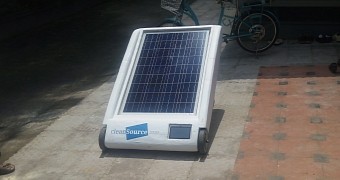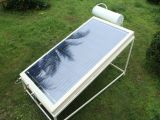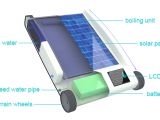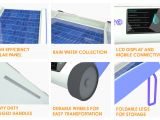There are multiple ways to get drinkable water. Distillation is a pretty common one, since it boils germs to death. But it's only worth doing to fresh water. Salt water is a different kettle of fish altogether, not something that anyone could get drinking water from. That's what the team behind the Desolenator wants to change.
Desalination technology typically uses vacuum distillation, the boiling of water at less than atmospheric pressure.
Membranes are used to desalinate the water through the principle of reverse osmosis, where semipermeable membranes and pressure are used to separate salts from water.
Desalination has incurred a fair bit of criticism for not being all that energy-efficient. However, many areas have to rely on the process, as do ships.
That's why many people, from MIT researchers to companies like IBM, have been working on less power-hungry systems for years.
The Desolenator promises the lowest cost per liter
Desolenator is a really impressive piece of work in a tech field where, say, supplying all domestic water by sea water desalination would force a rise of around 10% in the USA's energy consumption.
The product is the size of a television set and exclusively uses solar power in order to provide drinkable water at any time and in any place.
Desolenator founder and CEO William Janssen (yes, the product is a flagship named the same as the parent company) explains that the device is entirely energy-independent.
The large, flat screen you can see on the top is an array of photovoltaic panels which convert sunlight into electricity and has double glazing on the top, plus foam all around, allowing the solar panels to grow hotter than usual.
This deliberate increase in the temperature of the panels provides enough heat so that, when a thin film of water is run across the surface, it soaks up the heat. The heated water then arrives in a vessel where the electricity generated by the Desolenator powers a spiral heater that finally brings the water to a boiling point and creates vapor.
Said vapor is, finally, collected and distilled into clean water. Around 15 liters / 3.96 gallons can be produced per day.
Availability and pricing
The Desolenator is not available for order yet, exactly, but a crowdfunding campaign has been started on Indiegogo. To get one you need to make a pledge of $450 / €365, but you won't see the order delivered before October 2015.
A pretty long time, but we suppose it's bearable when you compare it to the 20 years that the device is supposed to last for. Besides, it can even collect rain water.

 14 DAY TRIAL //
14 DAY TRIAL // 



